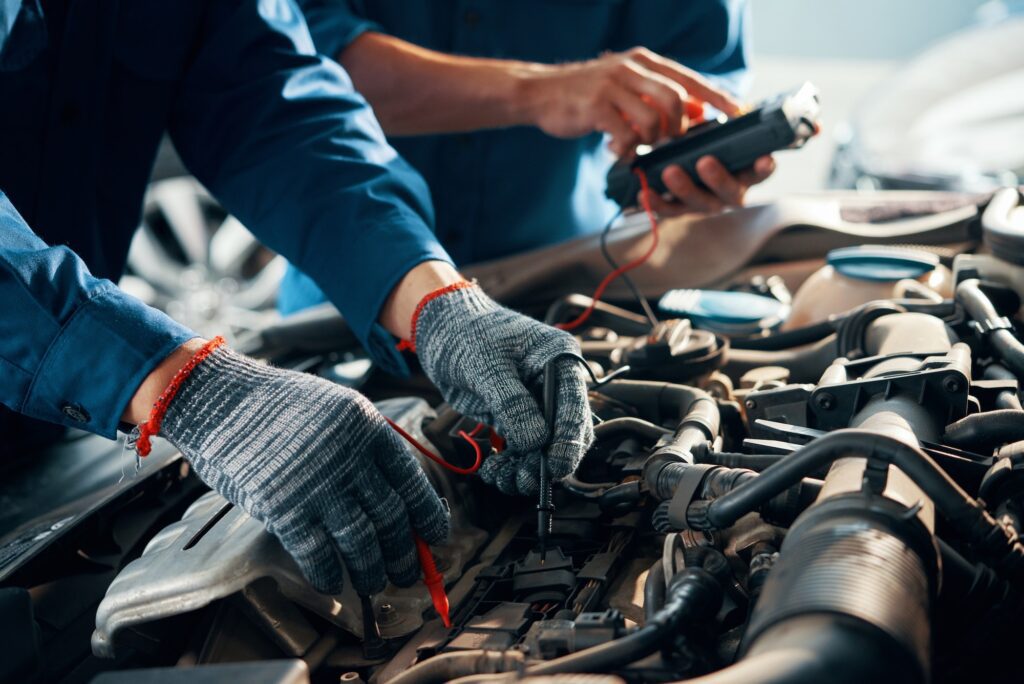![]() Monday – Thursday 7.30 am – 5.00 pm Friday 7.30 am to 4.00 pm
Monday – Thursday 7.30 am – 5.00 pm Friday 7.30 am to 4.00 pm
Owning a car brings convenience and mobility, but it also comes with its fair share of challenges. From strange noises to warning lights on the dashboard, cars often exhibit signs of underlying issues that need attention. In this blog, we’ll explore some of the most common car problems encountered by drivers and provide valuable tips on how to diagnose them effectively. By understanding these issues, you can address them promptly, saving time, money, and potentially avoiding breakdowns on the road.
Engine Misfires: One of the most noticeable signs of an engine misfire is a rough or vibrating sensation while driving. This can be caused by various factors, including faulty spark plugs, a clogged fuel injector, or a vacuum leak. To diagnose an engine misfire, start by checking the spark plugs and ignition coils for signs of wear or damage. Additionally, use a diagnostic tool to scan for error codes stored in the engine control unit (ECU), which can provide valuable clues about the underlying issue.
Overheating: An overheating engine can spell trouble if not addressed promptly. Common causes of engine overheating include a low coolant level, a malfunctioning thermostat, or a faulty radiator fan. To diagnose overheating issues, check the coolant level in the reservoir and inspect the radiator hoses for leaks or cracks. You can also visually inspect the radiator and cooling fan for any signs of damage or obstruction. If the problem persists, it’s advisable to seek professional help to prevent engine damage.

Brake Problems: Brake issues are a serious safety concern and should be addressed immediately. Common signs of brake problems include squealing or grinding noises when braking, a soft or spongy brake pedal, or uneven brake wear. To diagnose brake problems, visually inspect the brake pads and rotors for signs of wear or damage. Additionally, check the brake fluid level in the reservoir and look for any leaks in the brake system. If you notice any abnormalities, have your brakes inspected by a qualified mechanic to ensure safe operation.
Electrical Issues: Electrical problems can manifest in various ways, from a dead battery to malfunctioning lights or accessories. These issues can be caused by a faulty alternator, corroded battery terminals, or a short circuit in the wiring harness. To diagnose electrical problems, start by checking the battery voltage using a multimeter. If the battery voltage is low, it may indicate a charging system issue. Additionally, inspect the fuses and relays in the fuse box for any signs of damage or corrosion. If you’re unable to pinpoint the issue, consult a professional mechanic with expertise in automotive electrical systems.
Transmission Trouble: Transmission problems can range from minor issues such as delayed shifting to more severe problems like slipping gears or transmission fluid leaks. To diagnose transmission issues, start by checking the transmission fluid level and condition. Burnt or contaminated transmission fluid can indicate internal damage or wear. Additionally, listen for any unusual noises while shifting gears and pay attention to any warning lights on the dashboard. If you suspect transmission trouble, it’s best to consult a qualified mechanic for a thorough inspection and diagnosis.
Understanding common car problems and how to diagnose them is essential for maintaining your vehicle’s performance and reliability. By paying attention to warning signs and addressing issues promptly, you can prolong the life of your car and ensure safe operation on the road. However, if you’re unsure about diagnosing or repairing car problems yourself, don’t hesitate to seek professional help from a trusted mechanic. With proper care and maintenance, you can keep your car running smoothly for years to come.

If you need an experienced and honest mechanic in Wollongong, make 1st Choice Mechanical Repairs your only choice.
Licence. No: MVRL31591



All rights reserved 1st Choice Mechanical Repairs Copyright 2023